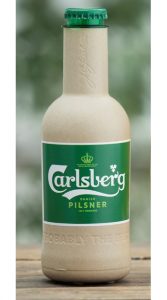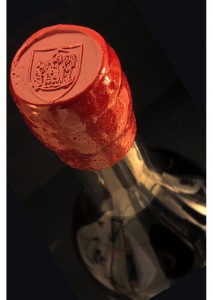Addressing Environmental Concerns
 Several environmental initiatives, designed to address climate change, have been launched recently:
Several environmental initiatives, designed to address climate change, have been launched recently:
1. In Cognac, the BNIC has introduced a ban on the chemical weeding of vineyard plots stating that winegrowers must control vegetation ‘by mechanical means’ in order to ‘preserve the terroir’s environment and resources.’ In addition, chemical weeding of field boundaries has been banned. The new ruling must be implemented by August 2020.
2. Closure maker, Diam Bouchage, has announced that using cork “is a long-term contribution to climate change mitigation”. The company claims that its cork production now absorbs more carbon dioxide than it creates. Cork forests help to absorb CO2 in the earth’s atmosphere and the trees are only harvested every 10 years for their bark. Demand for more corks will therefore lead to the planting of more trees. Cork trees live for over 120 years so their effect on the atmosphere is long lived.
3. In an attempt to address the perennial problem of drink packaging, Carlsberg have produced a ‘paper bottle’. Made from sustainably sourced wood fibres, it has a bio-based “inner barrier” which enables the bottle to hold beer and be fully recyclable. Still under development it is hoped that controlled testing will begin in 2020.

 For more than a thousand years cork has been used for sealing wine and spirit bottles. It is a natural product harvested from cork trees which regrow their bark every nine years. It has been revered by traditional wine makers for centuries as the ideal seal. However, the cork seal is not quite so ideal for use with spirits as they can, over the years, degrade the cork. Eventually the cork will turn black and the exposed areas will become so damaged, the cork will drop into the bottle. It is for this reason that cognac producers always advise that bottles should never be laid down for storage. Corks are also porous and allow tiny quantities of air and spirit to pass through, thereby aiding evaporation. Cognac producers have long recognised this problem so today the quality of the seal is much improved. This has been achieved partly by the introduction of semi synthetic cork mixtures and partly by encasing the top of the bottle with some form of capping material.
For more than a thousand years cork has been used for sealing wine and spirit bottles. It is a natural product harvested from cork trees which regrow their bark every nine years. It has been revered by traditional wine makers for centuries as the ideal seal. However, the cork seal is not quite so ideal for use with spirits as they can, over the years, degrade the cork. Eventually the cork will turn black and the exposed areas will become so damaged, the cork will drop into the bottle. It is for this reason that cognac producers always advise that bottles should never be laid down for storage. Corks are also porous and allow tiny quantities of air and spirit to pass through, thereby aiding evaporation. Cognac producers have long recognised this problem so today the quality of the seal is much improved. This has been achieved partly by the introduction of semi synthetic cork mixtures and partly by encasing the top of the bottle with some form of capping material.